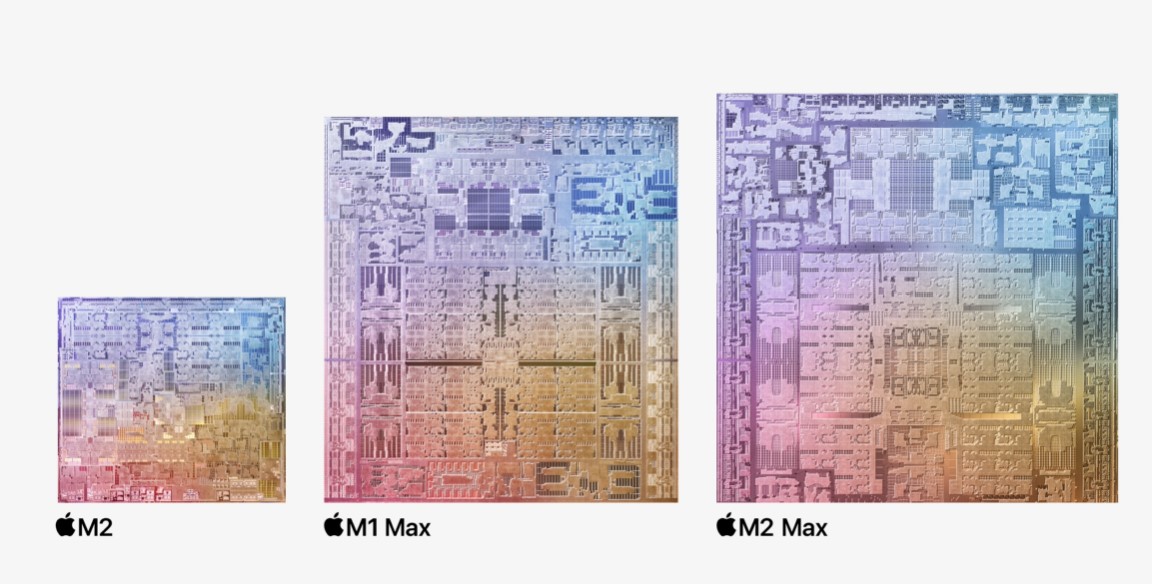Apple now has no serious rivals in the computing space, and it's all down to control

The most surprising thing about Apple's new M2 Pro and M2 Max processors, and its new MacBook Pros and Mac mini based on them, is not that Apple casually dropped them all in the middle of January. It's that Apple can do this all at once. It's a hand-in-glove approach that is likely the envy of most platform, chip, and system companies – and it's paying huge dividends for consumers.
Apple's complete control of the stack, from the silicon, to the system, to the OS, to the ecosystem, is unrivaled in the industry. It makes announcement days like this possible, and almost ensures that the new MacBook Pros and Mac mini will end up on our list of best laptops and best computers, respectively
Microsoft can control the platform and hardware with its Surface Pro line, but most of those machines will be built and sold on Intel's latest generation of Core silicon. Sure, there's the Qualcomm project, through which Microsoft and the Snapdragon developer create bespoke S3 silicon for always-connected hardware (see my Surface Pro 9 5G review). But that's the exception for Microsoft, not the rule.
Apple has, with the exception of the Mac Pro, moved its entire line of hardware to Apple silicon. It essentially waits for no person, and no partner, to build and deliver its latest systems.
I don't think I've ever seen an Apple exec holding a piece of Apple Silicon. Look at that M2 Pro. So pretty. pic.twitter.com/udD7YDrPX5January 17, 2023
Intel and Nvidia work with partners to incorporate their upcoming CPUs and GPUs, respectively, into the latest hardware, and the timing is often within months, weeks, days, and sometimes hours of the silicon partners introducing their latest offerings. Still, the approaches are as varied as the system configurations. No one in those partnerships has direct control of the latest Windows 11 build.
Apple, however, makes it all seem so effortless. It keeps spinning up new, more powerful, and more energy-efficient versions of the M-series chip. It's been not quite three years since Apple introduced the first MacBook Air running its new M1 chip. That CPU arrived just three months after Apple announced its intention to shift its entire line of Macs over to its own silicon. At the time, I was surprised at the speed; now I take it for granted that Apple will simultaneously unveil new M-class chips and systems running it.
And it's not just the coordination – Apple is delivering startling leaps in performance and power management.
Sign up for breaking news, reviews, opinion, top tech deals, and more.

Don't take it for granted that a company just three years into its silicon journey can deliver CPUs capable of running Pro-, even enterprise-class software and processes. As I wrote back in 2020, the M1 chip had a shocking amount of headroom for such an energy-efficient CPU. The first chip easily took on Intel's desktop-class CPUs.
Now Apple is delivering variations on that original M1 theme that, with each iteration, are – at least according to Apple – anything from 20% to 40% faster than previous iterations. They're also, for some mission-critical operations, faster than Intel's top-tier Intel Core i9 CPU.
And because Apple started with what is essentially mobile CPU architecture, Apple silicon is generally more energy efficient than most Intel and AMD CPUs.
The claimed 22 hours of battery life for a system (for the M2 Pro 16-inch MacBook Pro) is not unheard of (especially for those based on say Qualcomm CPUs) but the level of performance, which Apple promises will remain the same on plugged-in or battery power, is impressive.
Even in the area of compatibility, Apple has managed to mitigate major concerns, thanks to its Rosetta 2 app translator, and tight relationships with some of the major creative tool companies (I see you, Adobe). In all the time I've used M-class Apple systems, I have yet to find something that doesn't run.
Apple's control extends, obviously, to the platform and ecosystem. And it's no accident that things run so smoothly on systems based on Apple's silicon. macOS is built by Apple to support all components and software that run on it.
My point is, nothing feels like a patchwork. It's always a top-to-bottom cohesive system. It's also a major competitive advantage for Apple, and offers a kind of coherence currently unmatched in, for instance, the Windows ecosystem.
It's a formula that's almost smack-your-head obvious. Near absolute control translates into good things for your product line and your consumers. It also means Apple is set to remain miles ahead of the competition for the foreseeable future.

A 38-year industry veteran and award-winning journalist, Lance has covered technology since PCs were the size of suitcases and “on line” meant “waiting.” He’s a former Lifewire Editor-in-Chief, Mashable Editor-in-Chief, and, before that, Editor in Chief of PCMag.com and Senior Vice President of Content for Ziff Davis, Inc. He also wrote a popular, weekly tech column for Medium called The Upgrade.
Lance Ulanoff makes frequent appearances on national, international, and local news programs including Live with Kelly and Mark, the Today Show, Good Morning America, CNBC, CNN, and the BBC.